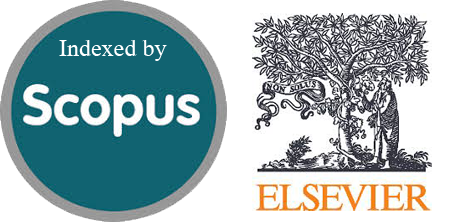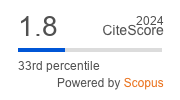Development of Quantum Circuit Architecture on Quantum Perceptron Algorithm for Classification of Marketing Bank Data
Abstract
The creation of quantum circuit architecture based on the quantum perceptron algorithm to classify marketing bank data is proposed in this work. A quantum circuit is a quantum gate made up of two quantum gates. Quantum bits are used in this study's computation. The primary proposed learning method was not ideal, which is the context of this study. The percentage of qubits measurement value is still 90.7 percent. It is essential to raise the value of the qubit rate. Using the IBM Quantum Experience quantum computer, researchers measured, trained, and tested the quantum circuit architecture. Bank marketing data from the UCI Machine Learning Repository was used. A quantum circuit architecture model results from this research the quantum circuit measurement results.
Downloads
References
D. Amirullah and L. M. Gultom, “Data Classification with Qubit Superposition Approach in Quantum Perceptron,” Proc. 2019 2nd Int. Conf. Appl. Eng. ICAE 2019, 2019.
K. and Chitra, “Classification Of Diabetes Disease Using Support Vector Machine,” vol. 3, No. 2, pp. 1797–1801, 2018.
D. Sisodia and D. Singh Sisodia, “Prediction of Diabetes using Classification Algorithms,” Procedia Comput. Sci., vol. 132, No. Iccids, pp. 1578–1585, 2018.
E. Farhi and H. Neven, “Classification with Quantum Neural Networks on Near Term Processors,” pp. 1–21, 2018.
S. Sahoo, A. Kumar Mandal, P. Kanti Samanta, I. Basu, and P. Roy, “A critical overview on Quantum Computing,” J. Quantum Comput., vol. 2, No. 4, pp. 181–192, 2020.
M. H. Amin, E. Andriyash, J. Rolfe, B. Kulchytskyy, and R. Melko, “Quantum Boltzmann Machine,” Phys. Rev. X, vol. 8, No. 2, 2018.
J. Bausch and F. Leditzky, “Quantum codes from neural networks,” New J. Phys., vol. 22, No. 2, pp. 1–50, 2018.
R. Y. Li, R. Di Felice, R. Rohs, and D. A. Lidar, “Quantum annealing versus classical machine learning applied to a simplified computational biology problem,” npj Quantum Inf., vol. 4, No. 1, pp. 1–13, 2018.
N. Killoran, T. R. Bromley, J. M. Arrazola, M. Schuld, and S. Lloyd, “Continuous-variable quantum neural networks,” pp. 1–21, 2018.
D. Türkpençe, T. Ç. Akıncı, and Ş. Serhat, “Decoherence in a quantum neural network,” 2018.
E. Torrontegui and J. J. G. Ripoll, “Universal quantum perceptron as efficient unitary approximators,” 2018.
M. Ohzeki, S. Okada, M. Terabe, and S. Taguchi, “Optimization of neural networks via finite-value quantum fluctuations,” pp. 1–11, 2018.
Y. Zheng, S. Lu, and R.-B. Wu, “Quantum Circuit Design for Training Perceptron Models,” pp. 1–12, 2018.
A. Ridho, Muharman, Al-Khowarizmi, and D. Listriani, “Big Data Forecasting Applied Nearest Neighbor Method,” 2019 Int. Conf. Sustain. Eng. Creat. Comput., pp. 116–120, 2019.
A. J. Da Silva and R. L. F. De Oliveira, “Neural networks architecture evaluation in a quantum computer,” Proc. - 2017 Brazilian Conf. Intell. Syst. BRACIS 2017, vol. 2018-Janua, No. 1, pp. 163–168, 2017.
Copyright (c) 2023 Jurnal RESTI (Rekayasa Sistem dan Teknologi Informasi)

This work is licensed under a Creative Commons Attribution 4.0 International License.
Copyright in each article belongs to the author
- The author acknowledges that the RESTI Journal (System Engineering and Information Technology) is the first publisher to publish with a license Creative Commons Attribution 4.0 International License.
- Authors can enter writing separately, arrange the non-exclusive distribution of manuscripts that have been published in this journal into other versions (eg sent to the author's institutional repository, publication in a book, etc.), by acknowledging that the manuscript has been published for the first time in the RESTI (Rekayasa Sistem dan Teknologi Informasi) journal ;








